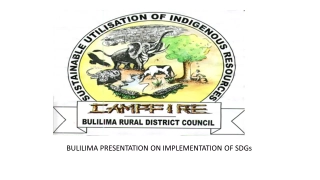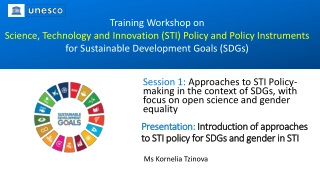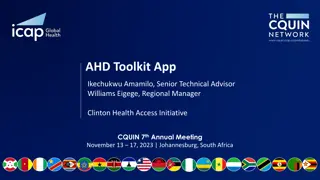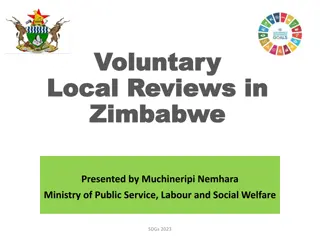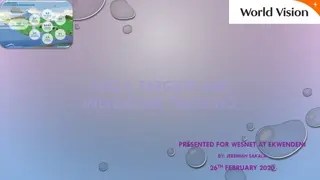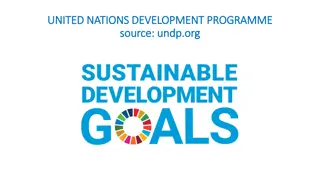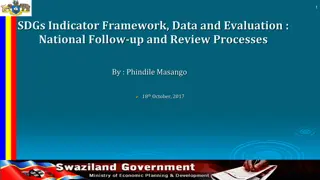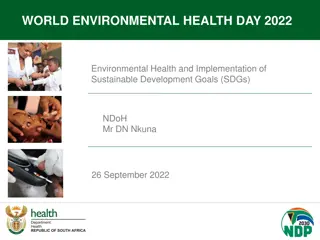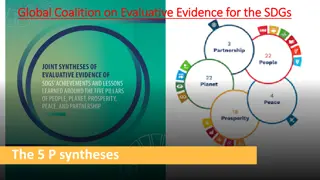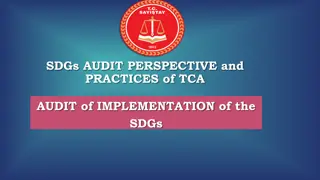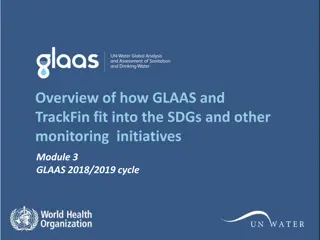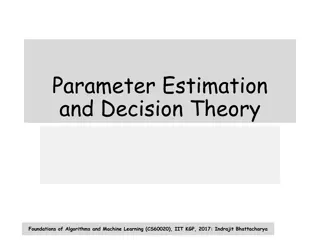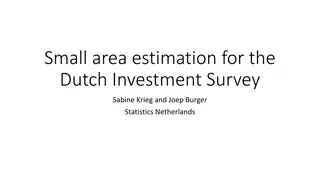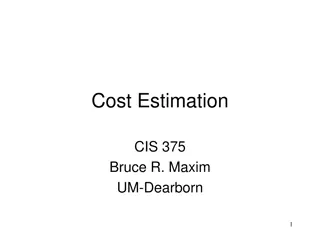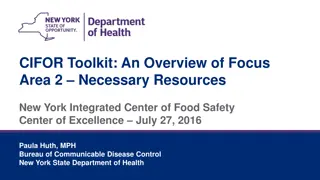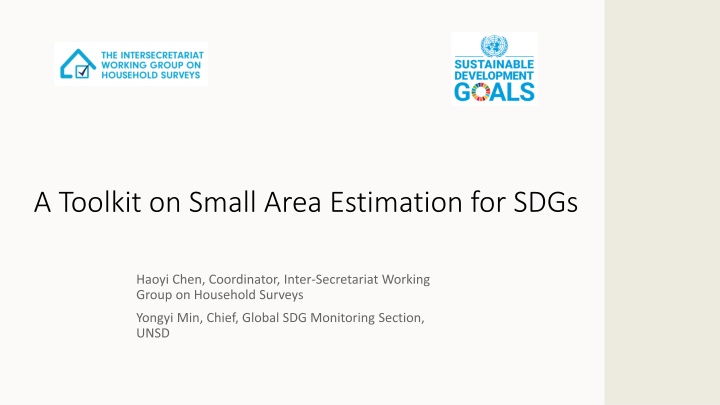
Toolkit on Small Area Estimation for SDGs
Enhance coordination of surveys at country and global levels for Sustainable Development Goals (SDGs). The toolkit focuses on advancing survey methodology, improving communication, and establishing working groups for household surveys. It also highlights the Interagency and Expert Group on SDG Indicators' efforts in data disaggregation and small area estimation to support official statistics production.
Download Presentation

Please find below an Image/Link to download the presentation.
The content on the website is provided AS IS for your information and personal use only. It may not be sold, licensed, or shared on other websites without obtaining consent from the author. If you encounter any issues during the download, it is possible that the publisher has removed the file from their server.
You are allowed to download the files provided on this website for personal or commercial use, subject to the condition that they are used lawfully. All files are the property of their respective owners.
The content on the website is provided AS IS for your information and personal use only. It may not be sold, licensed, or shared on other websites without obtaining consent from the author.
E N D
Presentation Transcript
Improve coordination: surveys within the country and efforts at the global level Advance (cross-cutting) survey methodology Enhance communication and advocacy Intersecretariat Intersecretariat Working Group on Household Group on Household Surveys Surveys Working Established at 46th Session of UNSC in 2015 Current (rotating) co-chairs: UN Women and WB Secretariat: UNSD Members: 11 international agencies and 8 countries
Inter Inter- -agency and Expert Group on Sustainable Development Goal agency and Expert Group on Sustainable Development Goal Indicators (IAEG Indicators (IAEG- -SDGs) SDGs) The 2030 Agenda for Sustainable Development A global blueprint for people, planet, prosperity , peace and partnerships, now and in the future 17 Goals, 169 targets and Leaving no one behind principle The IAEG-SDGs : Composed of 28 Member States (and representatives of regional commissions, regional and international agencies and CSOs are observers) Developed the global indicator framework for SDGs (231 indicators) IAEG-SDGs workstream on data disaggregation: Compilation of existing guidelines and methodologies on data disaggregation Preparation of Handbook on data disaggregation for SDGs Task Force on Small Area Estimation (joint with ISWGHS)
SAE Toolkit - overall objectives Using SAE methods to improve SDG data availability for vulnerable population groups requested by IAEG-SDGs Offering practical guidance and country case studies Providing a space for partners to document and disseminate their SAE methodologies Enabling environment for using SAE for official data production
Work modality A group of experts providing guidance Wiki-platform
SAE for official statistics Targeted audience: National Statistical Offices Practical tools and national case studies Support SDG monitoring Enabling environment for SAE to produce official statistics Documentation on what has worked and what has not A space for our partners on their SAE work
SAE Toolkit - overall objectives Using SAE methods to improve SDG data availability for vulnerable population groups requested by IAEG-SDGs Offering practical guidance and country case studies Providing a space for partners to document and disseminate their SAE methodologies Enabling environment for using SAE for official data production
Establishing a clear and focused objective that links SAE to data use for policymaking Fostering an environment for research and development Government commitment and sustainable financial support to SAE experimentation and production Design-based versus model-based estimates: a changing culture in the national statistical offices Good input data for SAE Maintaining a high and fit-for-purpose quality standard Collaboration Capacity building Disclosure control Transparency in releasing methodology and communicating quality Enabling environment to enable the use of SAE for official data production
Questions using SAE for official data production What do you consider as the most important elements for successful use of SAE for official data? Could you share a success country story that you have had What are the most challenging aspects? What is your advice to our countries? Anything that the United Nations or other development agency could do to help?

